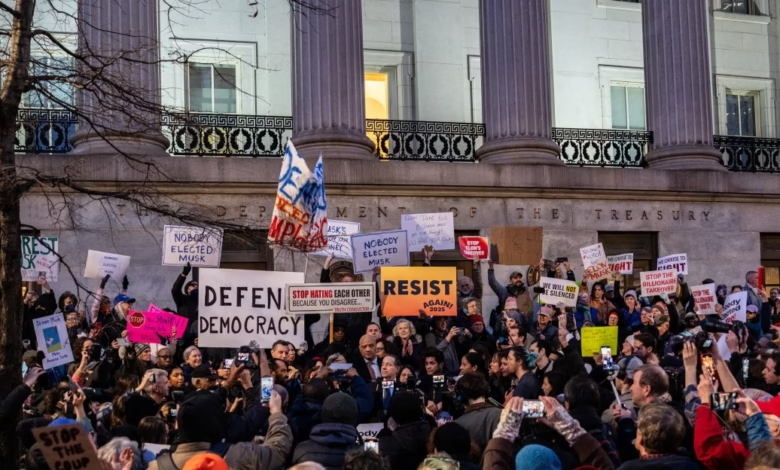Protect Your Phone Before Joining a Protest

▼ Summary
– Protests against systemic racism and ICE activities have led to nationwide demonstrations, prompting the Trump administration to deploy military forces, increasing the risk of conflict and arrests.
– Phones and smartwatches can be confiscated during protests, exposing personal data, so securing this information is crucial to protect yourself and others involved.
– To minimize risks, leave your phone at home or use a burner phone, disable biometric unlocking, encrypt your device, and turn on airplane mode to limit tracking.
– Use secure apps like Signal for encrypted messaging, Tor for private browsing, and VPNs to hide online activity, while also securing social media accounts with separate emails and two-factor authentication.
– If your device is confiscated, avoid unlocking it, change passwords immediately, and disconnect accounts to prevent unauthorized access to your data.
Participating in protests often means putting yourself at risk of surveillance or detention. Your smartphone, packed with personal data, could become a liability if seized by authorities. Taking proactive steps to secure your device helps protect both your privacy and the safety of others involved.
Why Phone Security Matters
Smartphones track your location, store private conversations, and contain login details for social media and other accounts. If confiscated, this information could expose not just you but also fellow protesters. Law enforcement may use forensic tools to extract data even from locked devices, making encryption and careful app usage essential.
Key Strategies for Protecting Your Phone
1. Consider Leaving Your Phone Behind The safest option is not bringing your primary device at all. A basic burner phone with minimal apps reduces risk significantly. If you must take your phone, back up and wipe sensitive data beforehand, reinstalling only essential apps.
2. Disable Biometric Unlocking Fingerprint and facial recognition can be legally compelled. Use a strong passcode instead, protected under the Fifth Amendment. Adjust settings to hide message previews on lock screens, and avoid unlocking your phone unnecessarily.
3. Encrypt Your Device Both Android and iPhones offer built-in encryption. On Android, navigate to Settings > Security > Encryption. For iPhones, enabling a passcode automatically encrypts data. This prevents unauthorized access even if your phone is seized.
4. Limit Connectivity Airplane mode stops cellular tracking, but disable location services separately. If you need internet, use a VPN to mask your activity. Avoid public Wi-Fi, which can be monitored.
5. Lock Down Individual Apps Use Guided Access (iOS) or App Pinning (Android) to restrict access to a single app. This lets you share photos or messages without exposing the rest of your device.
6. Choose Secure Communication Tools Signal provides end-to-end encrypted messaging with self-destructing options. For browsing, Tor or privacy-focused browsers like Brave minimize tracking. Avoid mainstream apps that log metadata.
7. Protect Social Media Activity Create a protest-specific account using an anonymous email. Enable two-factor authentication and avoid posting identifiable details about others. Blur faces and scrub metadata from photos before sharing.
8. Prepare for Confiscation If authorities take your phone, do not unlock it. Later, reset passwords and remotely wipe the device if possible.
Final Considerations No method is foolproof, but these steps reduce vulnerabilities. Digital security isn’t just for protests—applying these habits daily strengthens privacy overall. Stay informed, stay cautious, and prioritize collective safety.
(Source: The Verge)